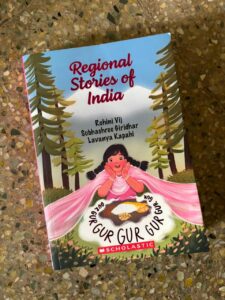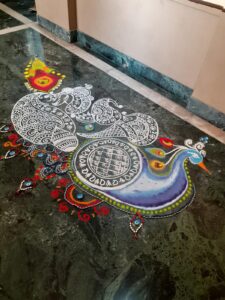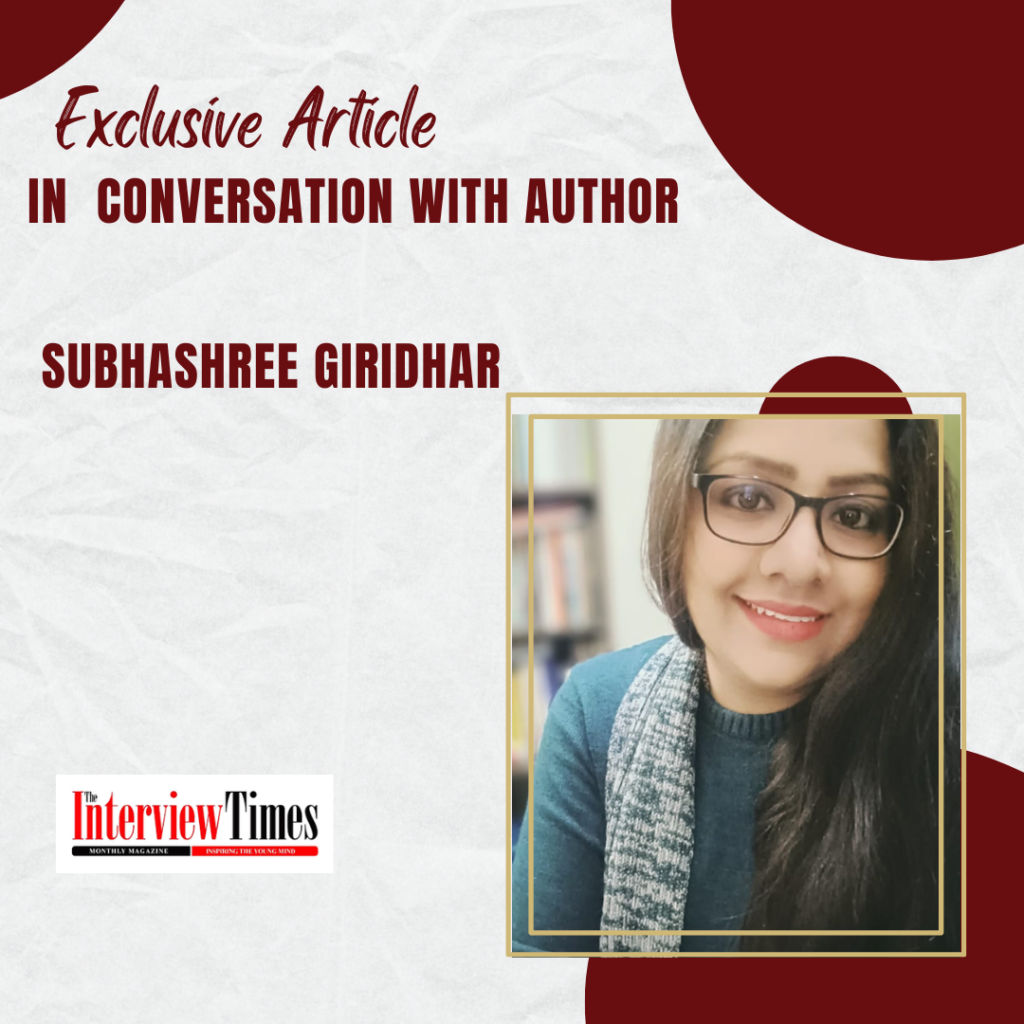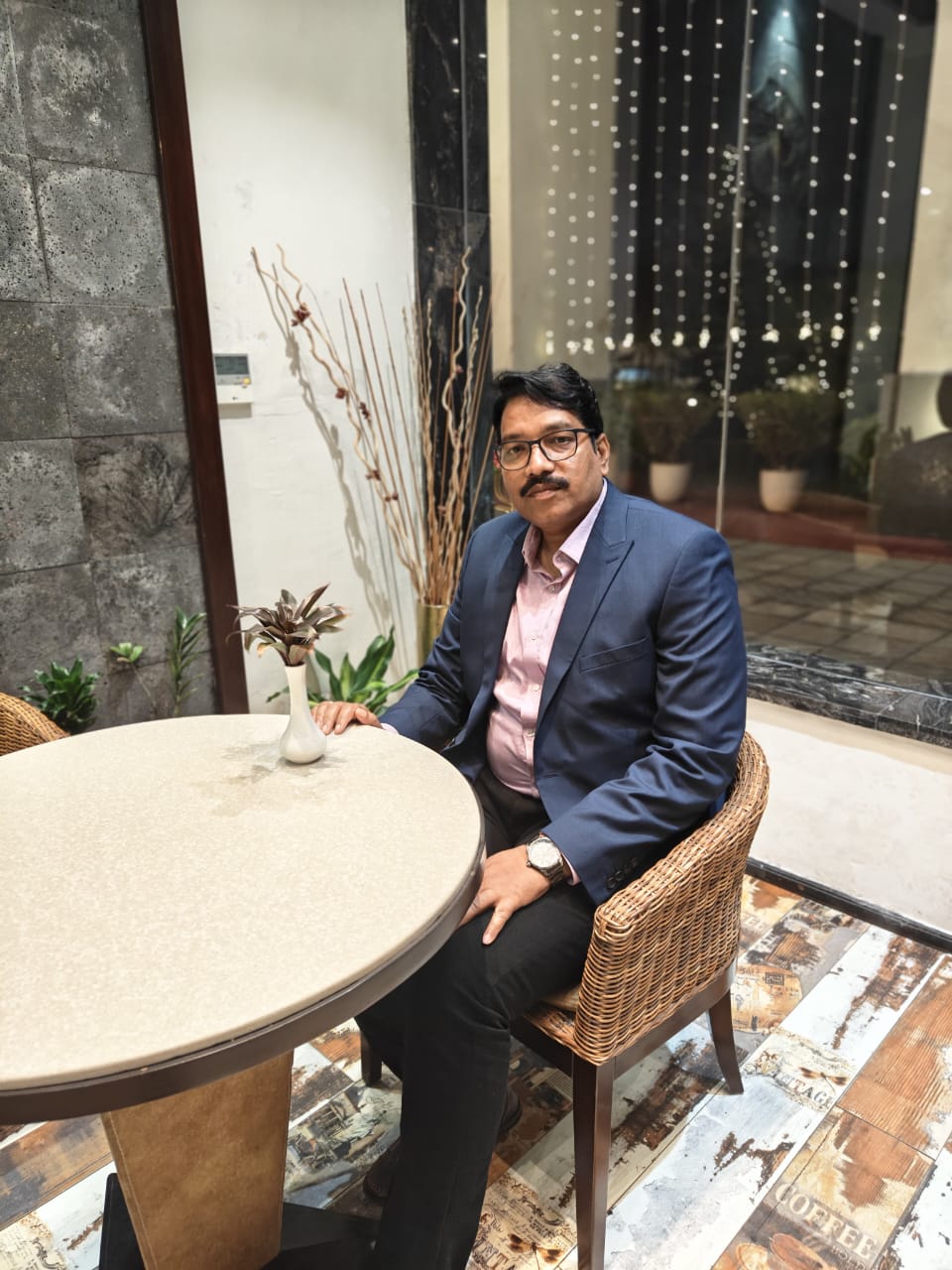Subhashree Giridhar is a thinker and dedicated writer with a passion for creating captivating tales for children. Known for her exceptional storytelling skills and writing style she’s not only a wordsmith but also a thoughtful book reviewer. From scripting skits, composing poems and dramas in her childhood to her current venture into children’s nonfiction and fiction, Subhashree has always been immersed in the world of words and imagination.
Her creative journey also extends to the visual realm, where she showcases her skills as an exceptional rangoli artist. After a long tenure as a research associate at IIT-Madras, Subhashree now resides in Jamshedpur, where she continues to turn dreams into reality through her writing, inspired by the beautiful chaos of parenthood.

- Inspirations and Beginnings:
What inspired you to start writing and how do you perceive the impact of fiction and non fiction in today’s children’s literature
. Ans : Writing has been an inherent part of my journey from a young age. It all began with crafting elaborate apology notes, hanging them on the wall whenever my parents frowned at my mischief. Over time, my writing evolved—from cheerful two-liner birthday poems to participating in poetry contests,during my school days.
The turning point came when I became a parent. Reading stories to my endlessly curious daughter, who sought new tales each day before the old ones concluded, reignited my passion for storytelling. This inspired me to write stories tailored for children.
In the realm of children’s literature, fiction has long held sway. However, I believe it’s crucial to introduce children to non-fiction as well. Non-fiction provides a vital link to reality, allowing them to embrace global themes and concepts that shape their comprehensive learning and nurtures a holistic understanding of the world around them.
- Book Journey:
Can you share the inspiration behind “Regional Stories of India” and the journey of bringing it to life?

Ans: The inspiration behind the book “Regional Stories of India” began with an encounter—a true story of a girl raised in a village where the entire community, including her mother, toiled in a cashew processing unit. Their work involved hand-pebbling cashew shells, a laborious task that paid them by the kilo.
As I delved deeper into this reality, I discovered that the extreme poverty-driven environment began to unsettle the girl. Her journey unfolded as she sought education to bring a positive change to her mother’s life and that of the villagers who were facing occupational health hazards such as their palms turning pitch black—a consequence of the caustic oils released by the cashew nut shells.
Motivated by the need to shed light on this grim reality through a children’s story, I transformed the tale into a chapter book published by Scholastic. The narrative, while addressing the harsh challenges, is presented as a delightful read, filled with suspense, riddles, and a powerful, unexpected climax. I aimed to create a story that not only captivates young readers but also serves as a window into the diverse realities our country is grappling with.
In a world where privileged children may not be directly exposed to such hardships, “Regional Stories of India” strives to foster connection.Stories can instil empathy, understanding, and a sense of shared humanity among young readers.
- Writing Process:
How do you approach the creative process of writing, particularly when crafting stories for children?
Ans : Okay. Imagine when I describe a setting where I enjoy the piping hot chai infused with cardamom and ginger, accompanied by A.R. Rahman’s Bollywood melodies, I’m transporting you to a vivid experience. This immersion, known as ‘neural coupling’, is what happens when you engage with movies, videos, or books. As a writer, I leverage this tool to make readers feel and visualise, turning words into experiences.
This approach allows readers to effortlessly engage with the material, fostering a seamless connection between the story and their evolving perspectives. In essence, the creative writing process becomes a delightful journey where the power of words shapes young minds and sparks their imagination.
- Artistic Pursuits:
Your bio mentions your skill as a rangoli artist. How does your visual artistry complement or influence your writing?

Ans: Engaging in rangoli does influence my writing process to some extent; Both crafts thrive when I allow my imagination to soar and they demand patience. I notice that when I add intricate details to my rangoli, I feel compelled to infuse more depth into my characters and stories. The ancient art of rangoli guides my thoughts and writing. It’s about expressing myself with the right words, just as I do with the right blend of patterns, connecting the dots and hues in my rangoli artwork.
- Impact on Children:
What do you hope children take away from your stories, and how do you believe your writing can inspire them?
Ans : A few years ago, Google released a searchable database of 5.2 million books published since the 1500s.
Researchers soon found that between 1960 and 2008, the usage of kindness, and helpfulness dropped by 56% even as humility, and giving dropped by 52 %. Our language reflects our lives. Phrases like – community and common good lost in popularity to ” I can do it myself ” and “I come first. In the face of hatred and struggles, children are often advised to be strong and run the rat race to survive. Yet, it’s equally important to teach them to radiate love in the absence of love and extend a helping hand to those in need. Strength lies not only in resilience but also in kindness and compassion.
I aim for children to learn important life lessons from my stories. Building character is a key focus—encouraging qualities like friendship, choosing words wisely, embracing failure, listening, and being open to feedback. Learning isn’t bound by age; it happens when a child is ready to receive. As a parent and writer, I strive to create an invigorating environment through my stories that facilitate receptiveness.
- 6.What are the key expectations of Traditional publishers when reviewing a manuscript, and what elements should one include when pitching stories to them?
Ans: A great publisher is one who knows the art of weaving manuscript magic.
Traditional publishers have diverse styles, catalogues, and expectations, but the paramount focus should be on writing quality. It’s a significant challenge to get a story accepted by them. They seek a fresh storyline with compelling narration that not only entertains but also grounds children in today’s realities. Avoid overused similes and repetitive words. Look out for the cliches.
For example- “once upon a time is considered over used in modern writing and publishers may not agree with the usage of that expression. But if you are dead set on using that expression, always give a funny twist. – “ Once upon a time there was a magical town where unicorns roamed free and men wore pants on their heads, “ the point is to sound different and refreshing. When a story captures your imagination, start writing. Many children’s picture books feature poetic narration. Choose a publisher who might suit your writing style.
And coming to the things you might consider before pitching your stories to conventional publisher:
Synopsis: Provide a concise and engaging summary of your story. Highlight the main plot, characters, and the central conflict. Make it compelling enough to grab the publisher’s attention. Set the target audience clearly. show how your book fills a gap or offers something new.
Writing Style: One should maintain consistency in narrative.Use metaphors and analogies only if they are needed. Do not add a new character or an object out of nowhere. Do not bog down the readers with high end vocabularies and too much details. Try to add admirable humour, tempo.Showcase your writing style through a sample of your manuscript. This helps publishers assess your narrative voice, tone, and overall writing quality. Ensure the sample is polished and representative of the entire work.
Characterization: Introduce and describe your main characters. Share their motivations, conflicts, and development throughout the story. Publishers are interested in well-developed and relatable characters.
- Future Projects:
Can you give us a glimpse into any upcoming projects or themes you’re excited to explore in your future writings?
Ans: I’ve recently completed a book in Tamil, “Shri Puraanam,” comprising 89 verses each consisting 4 lines – on Goddess Lakshmi and her 8 incarnations. Supported by references from ancient Sangam literature, it’s tailored for Bharatanatyam dance dramas with potential musical compositions. This two-year project is now finished. Upcoming themes include body positivity for young teenagers and an animal thriller addressing environmental and forestry concerns. While these projects excite me, they’ll take time to complete in the best possible manner.
- The head of the Odisha Skill Development Authority emphasises the development of entrepreneurial skills
- A Shining Beacon of Excellence: Ajay Agarwal, A Maverick Leader in Mining, Logistics, and Social Endeavors
- Treating foods at its best
- Rajesh Sharma: The Versatile Star Commanding the Spotlight and Captivating Hearts






